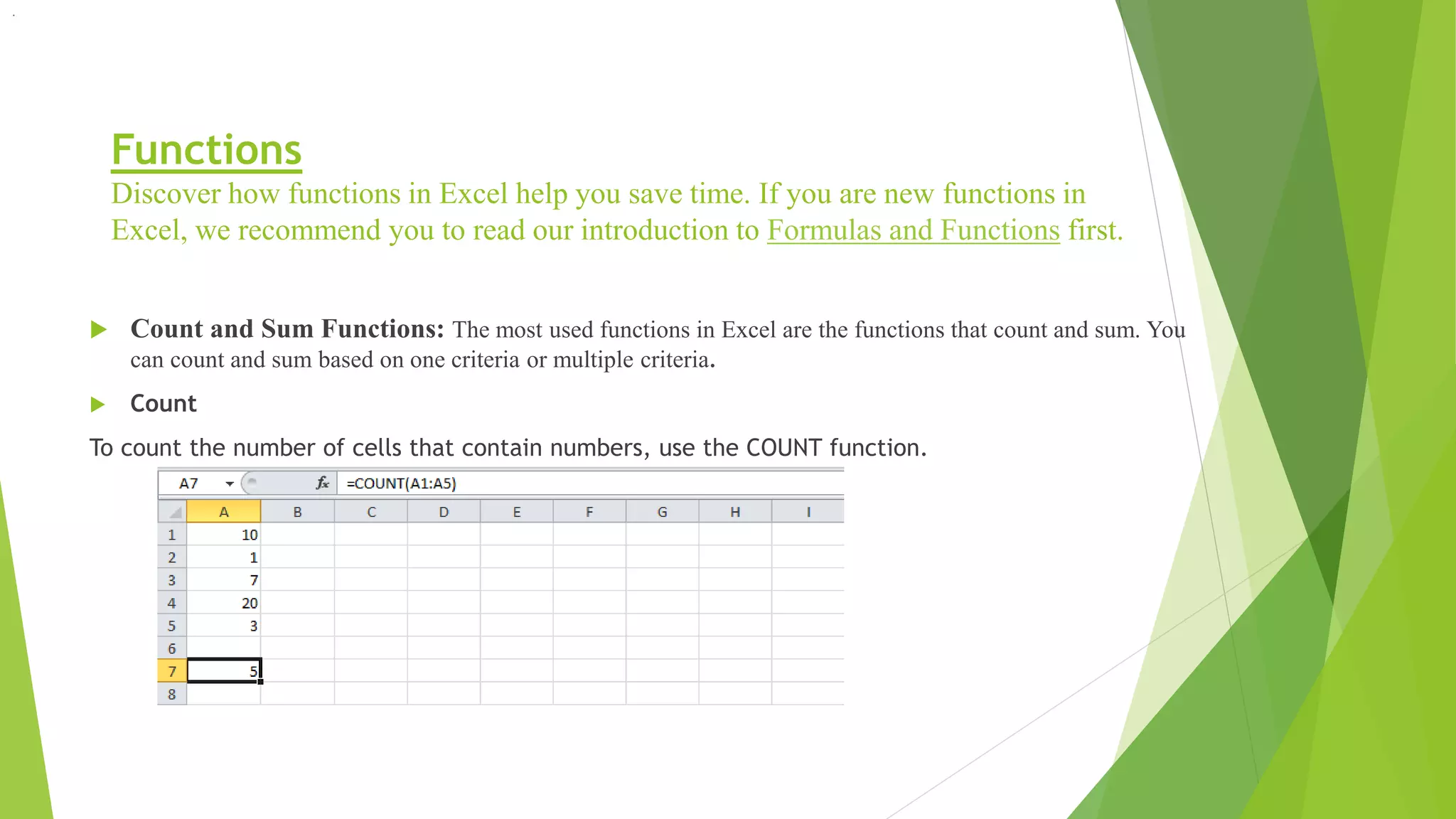The document provides an overview of various functions in Excel that can help analyze and manipulate data. It discusses count and sum functions, logical functions like IF, AND and OR, date and time functions, text functions, lookup and reference functions like VLOOKUP and INDEX, financial functions like PMT and RATE, statistical functions, rounding functions, and array formulas. Examples are given to demonstrate how each function works and how they can be used to solve different types of problems.





































